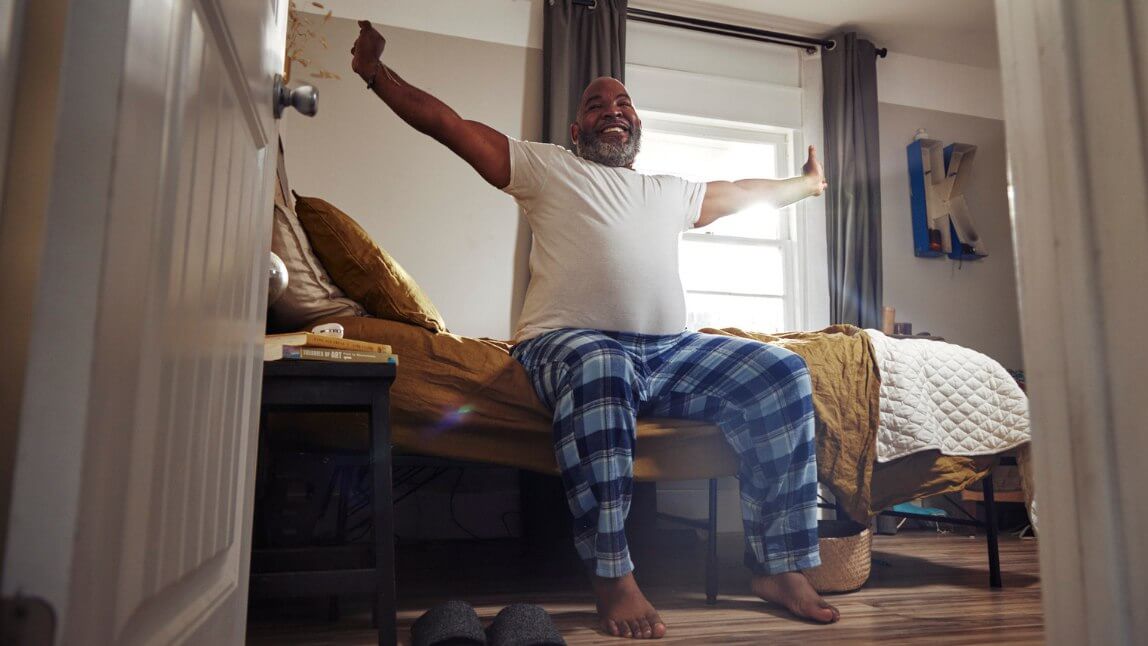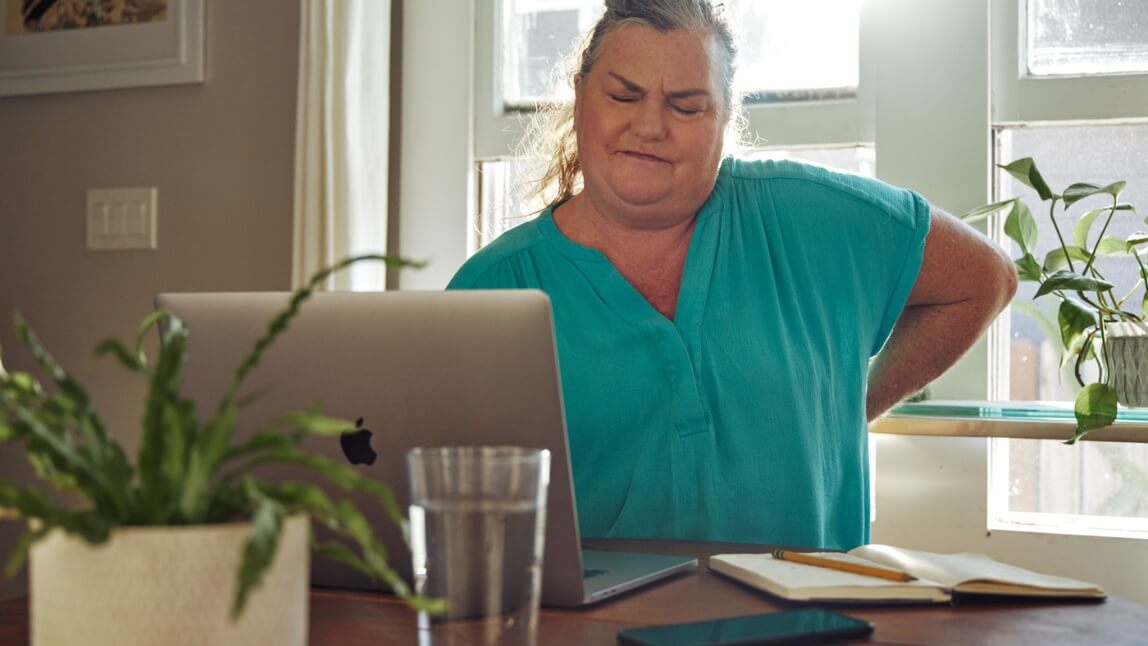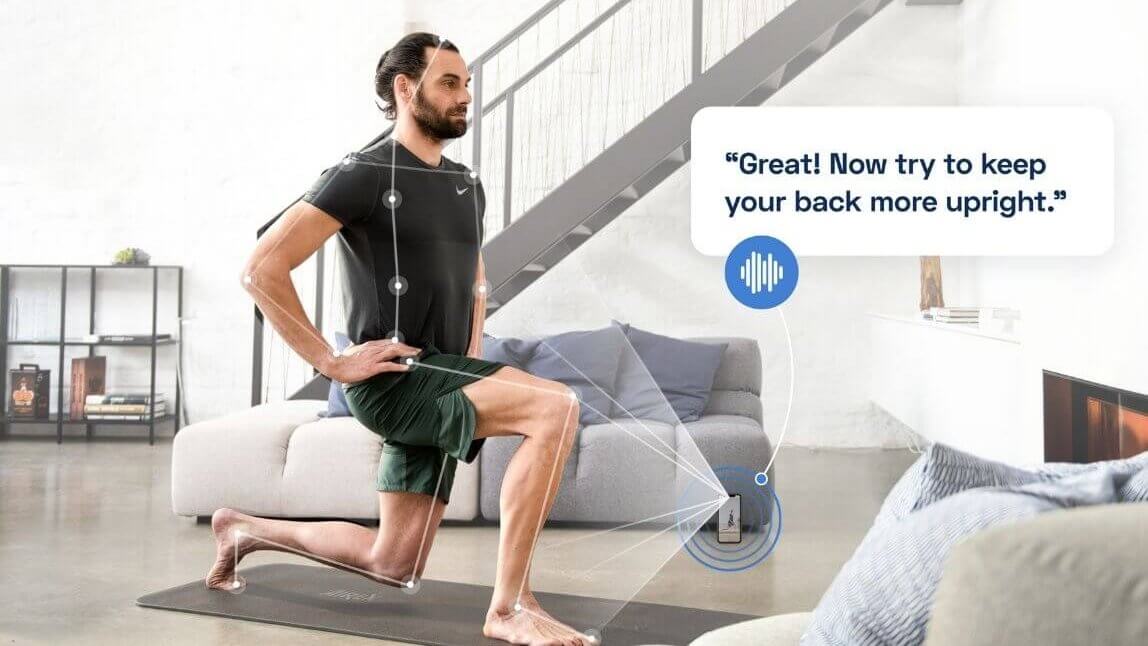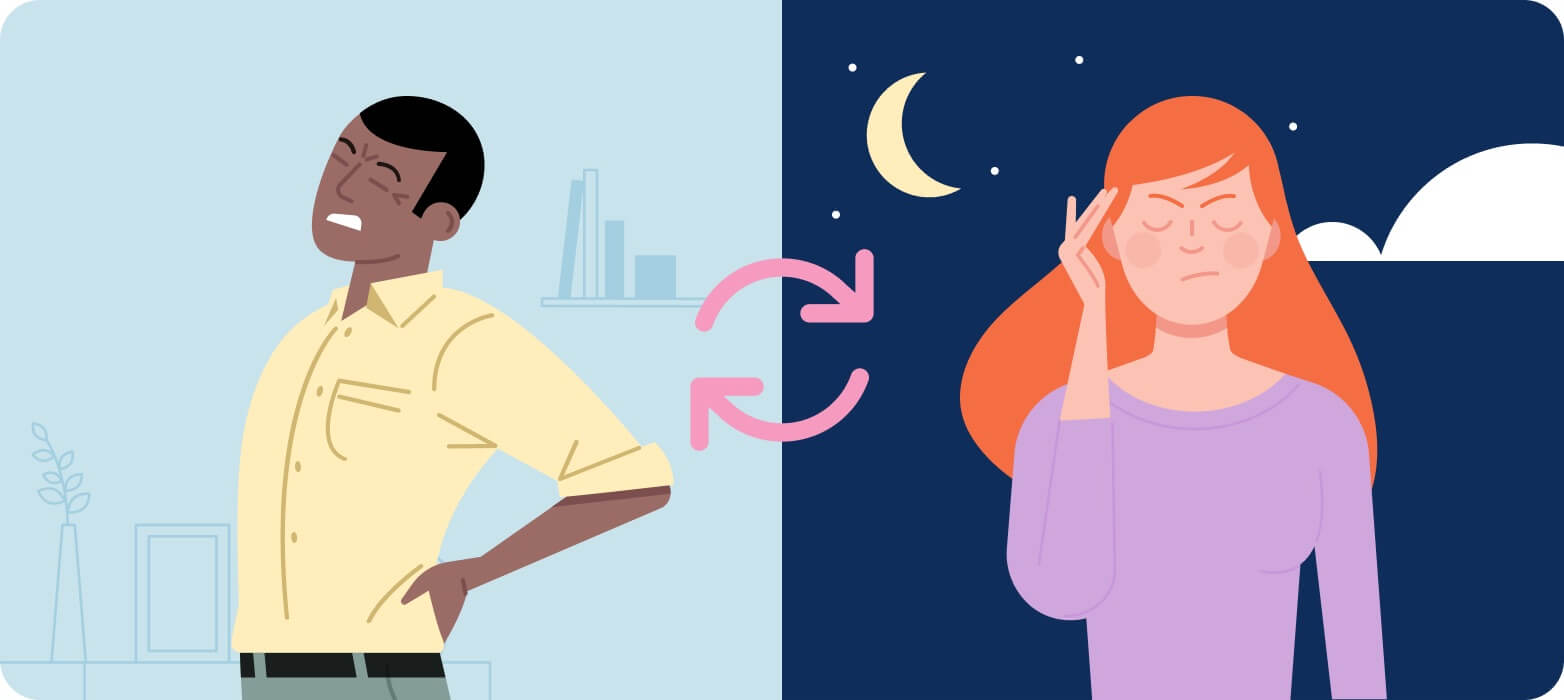
Break the Cycle of Back Pain and Poor Sleep
Back pain can disrupt your sleep, and poor sleep can exacerbate your back pain. It’s called the pain-insomnia cycle, and it can have a serious impact on your physical and mental health. The good news? It can be beat.
6 min read

Further Reading
-
 Back pain can be caused by a combination of factors including poor posture, sedentary lifestyle, muscle imbalances, or even stress. Here are some tips to help you find lower-back pain relief at home.4 min read
Back pain can be caused by a combination of factors including poor posture, sedentary lifestyle, muscle imbalances, or even stress. Here are some tips to help you find lower-back pain relief at home.4 min read -

How to Avoid Desk-Related Back Pain
Spending hours seated at a desk can take a toll on your back, neck, and shoulders. If your job requires you to sit for long periods of time, read on for tips and tricks on how to keep your back healthy.5 min read -

Digital Exercise Performance Tracking with Kaia Health’s Motion Coach™
AI-powered Motion Coach™ technology digitally guides users through musculoskeletal (MSK) rehabilitation to maximize effectiveness, reduce medical spend.4 min read
